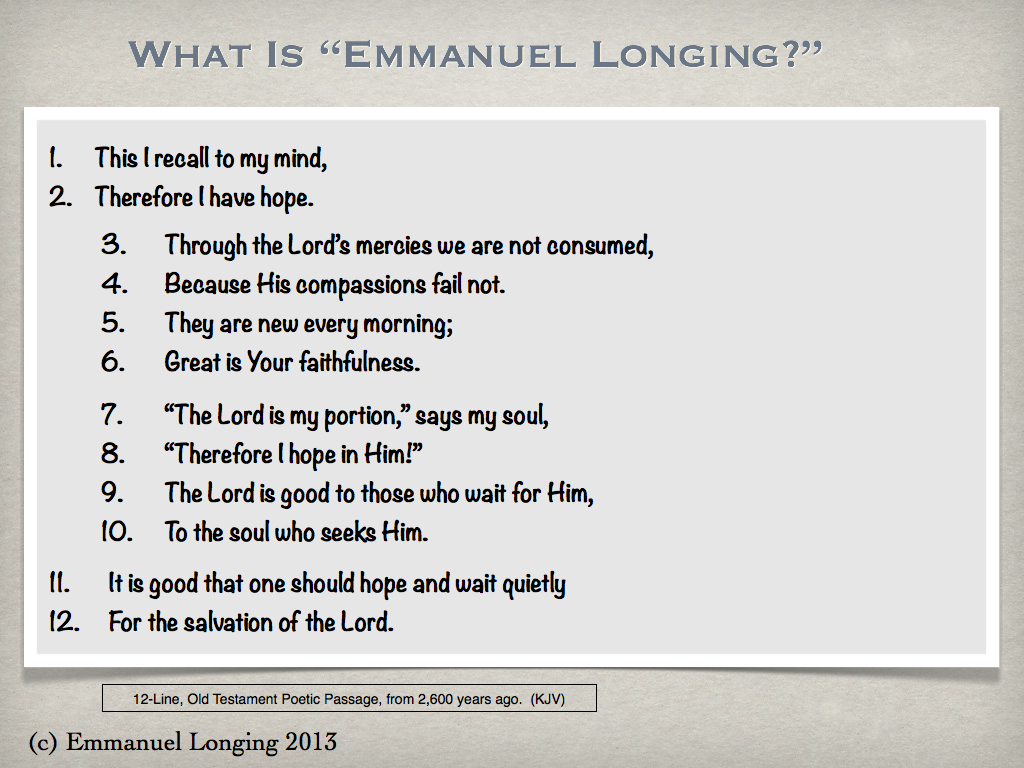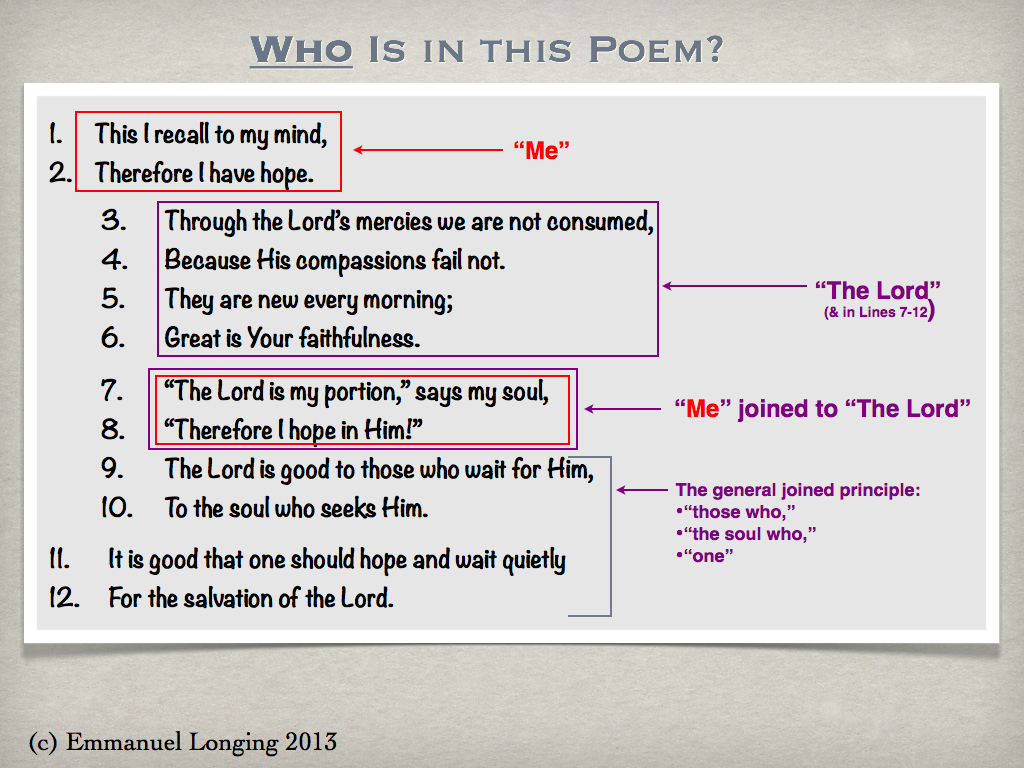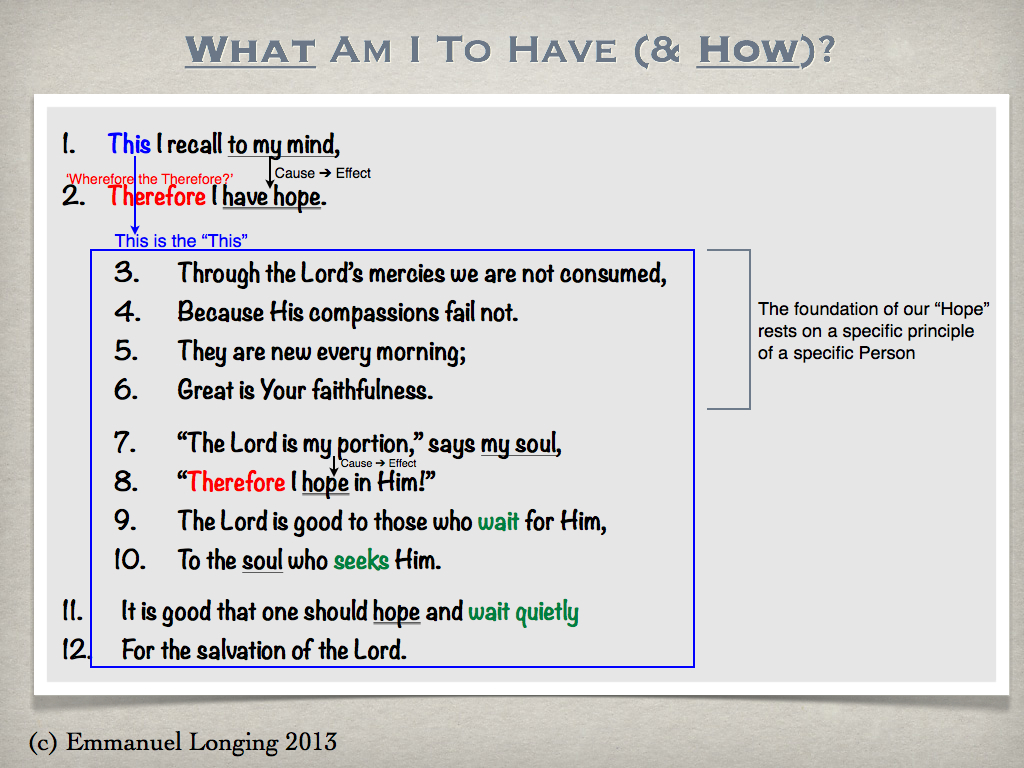The Bible uses many textual forms to communicate with us. One important form is poetry. In the chart below, I’ve extracted 12 lines from a longer poem in the Old Testament to begin our study of Emmanuel Longing. For now, let us consider the words on the page without taking note of the context. We will study the context of these verses later.  Let’s begin our study by looking at the “who” question in this poetic passage:
Let’s begin our study by looking at the “who” question in this poetic passage: Clearly the passage begins with a reflective perspective: what do I think, what do I recall, and in so doing what happens to me? The “this” of Line 1 is the body of the poem shown in the indented Lines 3 through 10, and Lines 11-2. Also to be noted that the writer’s reflection on such “this” leads to “hope.” “Hope,” as we shall see, is a crucial perspective in this passage, and with respect to the broad subject of Emmanuel Longing.
Clearly the passage begins with a reflective perspective: what do I think, what do I recall, and in so doing what happens to me? The “this” of Line 1 is the body of the poem shown in the indented Lines 3 through 10, and Lines 11-2. Also to be noted that the writer’s reflection on such “this” leads to “hope.” “Hope,” as we shall see, is a crucial perspective in this passage, and with respect to the broad subject of Emmanuel Longing. Hope is connected with certain closely-related ideas as shown by the words shown in green above: wait, seeks, wait quietly, all of which are longing words–words that point to something real that is presently desired, and though real, it is not yet fully experienced. Some have called this reality yet incompleteness “the now and not yet.”. Such longing occurs frequently in Scripture, especially in the Book of Psalms.
Hope is connected with certain closely-related ideas as shown by the words shown in green above: wait, seeks, wait quietly, all of which are longing words–words that point to something real that is presently desired, and though real, it is not yet fully experienced. Some have called this reality yet incompleteness “the now and not yet.”. Such longing occurs frequently in Scripture, especially in the Book of Psalms.
(c) Emmanuel Longing, 2013